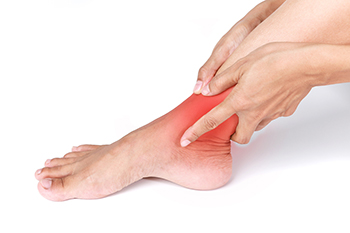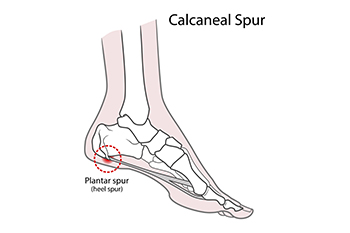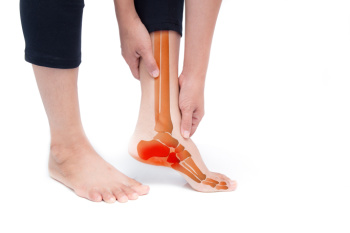Items filtered by date: November 2024
Understanding Chronic Ankle Pain and Instability

Chronic ankle pain and instability often result from repeated ankle injuries, creating a cycle of pain, weakness, and a fear of reinjury. Those affected may experience a sensation of the ankle giving way, soreness, and swelling that make daily activities challenging. This condition frequently affects athletes or active individuals who have had multiple sprains, weakening the ligaments, and leaving the joint unstable. It can also affect older people more. Causes include ligament damage, insufficient healing, or scar tissue buildup, and it is more common in those with high-impact lifestyles or a history of untreated ankle injuries. Without proper care, chronic ankle instability can lead to cartilage damage and arthritis over time. Treatment may include targeted exercise and bracing. In persistent cases, surgery might be considered. If you have chronic ankle pain and instability, it is strongly suggested that you visit a podiatrist who can help develop a personalized treatment plan to restore stability and reduce the risk of future injuries.
Ankle pain can have many different causes and the pain may potentially be serious. If you have ankle pain, consult with Leonora Fihman, DPM from California. Our doctor will assess your condition and provide you with quality foot and ankle treatment.
Ankle pain is any condition that causes pain in the ankle. Due to the fact that the ankle consists of tendons, muscles, bones, and ligaments, ankle pain can come from a number of different conditions.
Causes
The most common causes of ankle pain include:
- Types of arthritis (rheumatoid, osteoarthritis, and gout)
- Ankle sprains
- Broken ankles
- Achilles tendinitis
- Achilles tendon rupture
- Stress fractures
- Tarsal tunnel syndrome
- Plantar fasciitis
Symptoms
Symptoms of ankle injury vary based upon the condition. Pain may include general pain and discomfort, swelling, aching, redness, bruising, burning or stabbing sensations, and/or loss of sensation.
Diagnosis
Due to the wide variety of potential causes of ankle pain, podiatrists will utilize a number of different methods to properly diagnose ankle pain. This can include asking for personal and family medical histories and of any recent injuries. Further diagnosis may include sensation tests, a physical examination, and potentially x-rays or other imaging tests.
Treatment
Just as the range of causes varies widely, so do treatments. Some more common treatments are rest, ice packs, keeping pressure off the foot, orthotics and braces, medication for inflammation and pain, and surgery.
If you have any questions, please feel free to contact our offices located in Encino and Brentwood, Los Angeles, CA . We offer the newest diagnostic and treatment technologies for all your foot care needs.
Causes and Treatment of a Fibular Fracture

A fibular fracture involves a break in the fibula, the thinner of the two bones in the lower leg, located parallel to the tibia, or shinbone. This injury often results from trauma, such as a fall, twisting motion, or direct impact during sports. It is common among athletes, particularly those in high-impact sports like soccer, skiing, or running. Fibular fractures can vary from minor stress fractures to complete breaks, often affecting stability in the ankle due to the fibula’s role in supporting this joint. What makes fibular fractures unique is that, unlike the tibia, the fibula bears less weight, so patients can sometimes still walk, although with difficulty. Treatment depends on fracture severity and can include immobilization with a cast, splinting, or, in complex cases, surgery to realign the bone. If you have sustained an injury to your ankle or lower leg, it is suggested that you consult a podiatrist for a proper diagnosis and treatment plan.
Broken ankles need immediate treatment. If you are seeking treatment, contact Leonora Fihman, DPM from California. Our doctor can provide the care you need to keep you pain-free and on your feet.
Broken Ankles
A broken ankle is experienced when a person fractures their tibia or fibula in the lower leg and ankle area. Both of these bones are attached at the bottom of the leg and combine to form what we know to be our ankle.
When a physician is referring to a break of the ankle, he or she is usually referring to a break in the area where the tibia and fibula are joined to create our ankle joint. Ankles are more prone to fractures because the ankle is an area that suffers a lot of pressure and stress. There are some obvious signs when a person experiences a fractured ankle, and the following symptoms may be present.
Symptoms of a Fractured Ankle
- Excessive pain when the area is touched or when any pressure is placed on the ankle
- Swelling around the area
- Bruising of the area
- Area appears to be deformed
If you suspect an ankle fracture, it is recommended to seek treatment as soon as possible. The sooner you have your podiatrist diagnose the fracture, the quicker you’ll be on the way towards recovery.
If you have any questions, please feel free to contact our offices located in Encino and Brentwood, Los Angeles, CA . We offer the newest diagnostic and treatment technologies for all your foot care needs.
Understanding Heel Spurs

Heel spurs are bony protrusions that develop on the underside of the heel bone, or calcaneus, often as a result of repeated stress and strain on the foot. Common causes include plantar fasciitis, excessive running or walking, and wearing improper footwear. Heel spurs can also be associated with obesity and certain medical conditions, such as arthritis. Symptoms of heel spurs typically include sharp pain in the heel, especially when taking the first steps in the morning or after prolonged sitting. The discomfort may lessen with movement but can worsen throughout the day. A podiatrist can diagnose heel spurs through a physical exam and imaging tests like X-rays. Treatment options include rest, stretching exercises, and custom orthotics to alleviate pressure. In more severe cases, corticosteroid injections or surgery may be considered. If you are experiencing heel pain or suspect heel spurs, it is suggested that you schedule an appointment with a podiatrist for an accurate diagnosis and effective treatment plan.
Heel spurs can be incredibly painful and sometimes may make you unable to participate in physical activities. To get medical care for your heel spurs, contact Leonora Fihman, DPM from California. Our doctor will do everything possible to treat your condition.
Heels Spurs
Heel spurs are formed by calcium deposits on the back of the foot where the heel is. This can also be caused by small fragments of bone breaking off one section of the foot, attaching onto the back of the foot. Heel spurs can also be bone growth on the back of the foot and may grow in the direction of the arch of the foot.
Older individuals usually suffer from heel spurs and pain sometimes intensifies with age. One of the main condition's spurs are related to is plantar fasciitis.
Pain
The pain associated with spurs is often because of weight placed on the feet. When someone is walking, their entire weight is concentrated on the feet. Bone spurs then have the tendency to affect other bones and tissues around the foot. As the pain continues, the feet will become tender and sensitive over time.
Treatments
There are many ways to treat heel spurs. If one is suffering from heel spurs in conjunction with pain, there are several methods for healing. Medication, surgery, and herbal care are some options.
If you have any questions feel free to contact our offices located in Encino and Brentwood, Los Angeles, CA . We offer the latest in diagnostic and treatment technology to meet your needs.
The Impact of Neuropathy on Feet

Peripheral neuropathy, is a condition where nerves outside the brain and spinal cord become damaged, commonly affecting the feet and ankles. This condition is often caused by diabetes, but factors such as infections, injuries, or vitamin deficiencies can also contribute. Neuropathy leads to a range of symptoms, including numbness, tingling, burning sensations, or sharp pain in the feet and ankles. As sensation diminishes, individuals may not notice minor injuries, such as cuts or blisters, which can lead to infections or ulcers, especially in diabetic patients. In more severe cases, muscle weakness and balance issues can develop, increasing the risk of falls and mobility problems. Proper management, including blood sugar control, wearing supportive shoes, and regular foot inspections, is important for preventing complications. If you have neuropathy in your feet, it is suggested that you visit a podiatrist who can provide a proper diagnosis and offer you strategies to protect your foot health.
Neuropathy
Neuropathy can be a potentially serious condition, especially if it is left undiagnosed. If you have any concerns that you may be experiencing nerve loss in your feet, consult with Leonora Fihman, DPM from California. Our doctor will assess your condition and provide you with quality foot and ankle treatment for neuropathy.
What Is Neuropathy?
Neuropathy is a condition that leads to damage to the nerves in the body. Peripheral neuropathy, or neuropathy that affects your peripheral nervous system, usually occurs in the feet. Neuropathy can be triggered by a number of different causes. Such causes include diabetes, infections, cancers, disorders, and toxic substances.
Symptoms of Neuropathy Include:
- Numbness
- Sensation loss
- Prickling and tingling sensations
- Throbbing, freezing, burning pains
- Muscle weakness
Those with diabetes are at serious risk due to being unable to feel an ulcer on their feet. Diabetics usually also suffer from poor blood circulation. This can lead to the wound not healing, infections occurring, and the limb may have to be amputated.
Treatment
To treat neuropathy in the foot, podiatrists will first diagnose the cause of the neuropathy. Figuring out the underlying cause of the neuropathy will allow the podiatrist to prescribe the best treatment, whether it be caused by diabetes, toxic substance exposure, infection, etc. If the nerve has not died, then it’s possible that sensation may be able to return to the foot.
Pain medication may be issued for pain. Electrical nerve stimulation can be used to stimulate nerves. If the neuropathy is caused from pressure on the nerves, then surgery may be necessary.
If you have any questions, please feel free to contact our offices located in Encino and Brentwood, Los Angeles, CA . We offer the newest diagnostic and treatment technologies for all your foot care needs.

